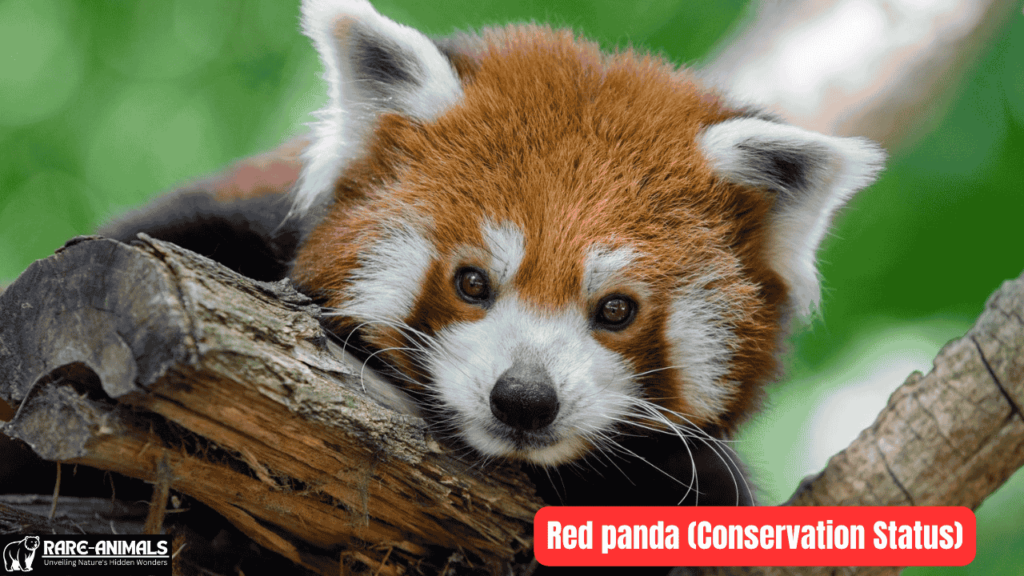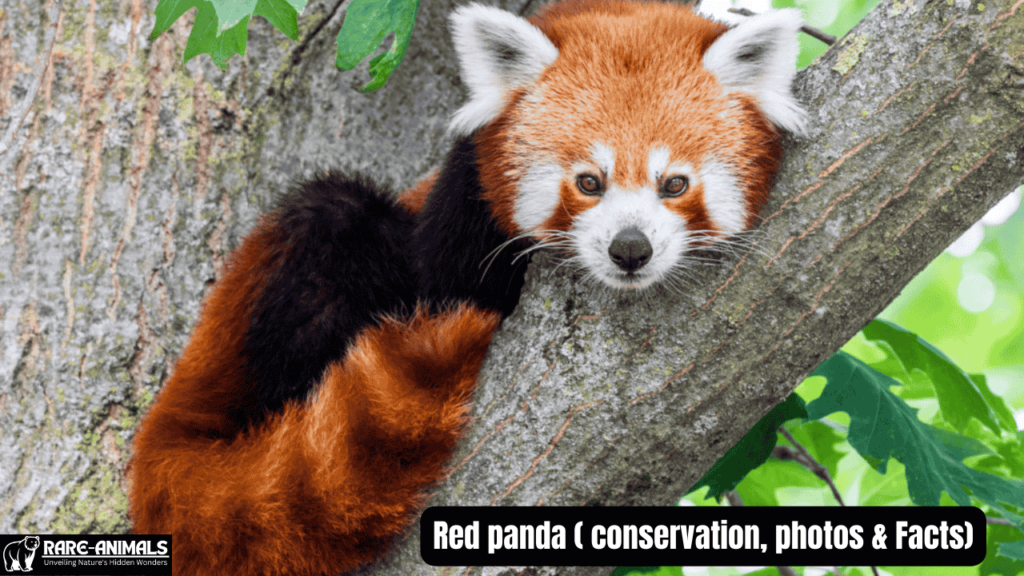In the misty, bamboo-covered mountains of the Himalayas, a remarkable creature exists that captures the imagination of wildlife enthusiasts and conservationists alike: the red panda (Ailurus fulgens). Often overlooked in favor of its more famous black and white namesake, the giant panda, the red panda is a unique and fascinating species that deserves our attention and protection.
Despite its name and superficial resemblance to giant pandas, the red panda is not closely related to them. Instead, it represents an entirely distinct taxonomic family, Ailuridae, and stands as the sole living member of its genus.
This solitary animal, with its rusty-red fur and raccoon-like face, has evolved to occupy a specialized niche in the high-altitude forests of Nepal, India, Bhutan, China, and Myanmar.
Taxonomy and Classification
Scientific Classification
| Taxonomic Level | Classification |
|---|---|
| Kingdom | Animalia |
| Phylum | Chordata |
| Class | Mammalia |
| Order | Carnivora |
| Family | Ailuridae |
| Genus | Ailurus |
| Species | fulgens |
Subspecies
Scientists currently recognize two subspecies of red pandas:
- Ailurus fulgens fulgens (Himalayan red panda)
- Found in Nepal, India, and western regions of their range
- Typically has darker and more vibrant fur coloration
- Ailurus fulgens styani (Chinese red panda)
- Predominantly found in China
- Slightly larger with more pronounced facial markings
Physical Characteristics
Red pandas are medium-sized mammals, typically measuring:
- Body Length: 50-64 cm (20-25 inches)
- Tail Length: 28-59 cm (11-23 inches)
- Weight: 3-6 kg (6.6-13.2 pounds)
Distinctive Physical Features
- Fur Coloration
- Rusty red to reddish-brown upper body
- Black underbelly
- White facial markings
- Ringed tail similar to a raccoon
- Adaptations
- Thick fur for cold mountain environments
- Semi-retractable claws for climbing
- Specialized “false thumb” (modified wrist bone) for gripping bamboo
Habitat and Distribution
Geographic Range
| Country | Estimated Population | Habitat Characteristics |
|---|---|---|
| Nepal | 500-700 individuals | Temperate mountain forests |
| India | 300-500 individuals | Eastern Himalayan regions |
| Bhutan | 700-1000 individuals | Protected national parks |
| China | 3000-4000 individuals | Sichuan and Yunnan provinces |
| Myanmar | Limited population | Northern mountainous areas |
Habitat Requirements
These pandas inhabit temperate forests at altitudes between 2,200-4,800 meters, characterized by:
- Dense bamboo understory
- Mixed coniferous and deciduous forests
- Cool, moist environments
- Abundant fallen logs and tree cavities

Diet and Feeding Behavior
Dietary Composition
| Food Category | Percentage of Diet |
|---|---|
| Bamboo | 85-95% |
| Fruits | 2-5% |
| Insects | 1-3% |
| Small Vertebrates | Rare/Occasional |
Reds are primarily herbivorous, with a highly specialized diet focusing on bamboo. Their digestive system has adapted to process large quantities of bamboo, which is low in nutritional value. To meet their energy requirements, they must consume approximately 1.5 kg of bamboo daily.
Behavioral Characteristics
Social Structure
- Solitary animals
- Minimal social interactions
- Territorial, marking areas with scent
- Primarily active during dawn and dusk (crepuscular)
Unique Behaviors
- Tree Dwelling
- Exceptional climbers
- Spend significant time in trees
- Sleep on tree branches
- Use trees as protection from predators
- Communication
- Communicate through various vocalizations
- Use scent marking
- Complex body language signals
Reproduction and Life Cycle
Reproductive Characteristics
| Reproductive Metric | Details |
|---|---|
| Sexual Maturity | 18 months |
| Mating Season | January-March |
| Gestation Period | 90-150 days |
| Litter Size | 1-4 cubs (typically 1-2) |
| Lifespan | 8-15 years in wild, up to 23 years in captivity |
Breeding Challenges
- Low reproductive rate
- Limited breeding success in captivity
- High infant mortality

Conservation Status
Threat Assessment
| Threat Category | Impact Level |
|---|---|
| Habitat Loss | High |
| Fragmentation | Critical |
| Poaching | Moderate |
| Climate Change | Significant |
| Human Encroachment | High |
IUCN Red List Status: Endangered
Estimated global population: Fewer than 10,000 mature individuals, with a continuing decline of approximately 10% per decade.
Conservation Efforts
Protection Strategies
- Habitat preservation
- Anti-poaching initiatives
- Community engagement
- Captive breeding programs
- Research and monitoring
Successful Conservation Models
- Nepal’s community-based conservation
- China’s protected nature reserves
- International breeding coordination
Challenges in Red Panda Conservation
Major Obstacles
- Limited genetic diversity
- Fragmented populations
- Complex habitat requirements
- Low reproductive rates
- Climate change impacts
Cultural Significance
Red pandas hold important symbolic and cultural value in their native regions:
- Considered sacred in some Himalayan communities
- Represent biodiversity and ecological balance
- Increasingly used as a symbol of wildlife conservation
Conclusion
The red panda represents a remarkable example of evolutionary adaptation and biological uniqueness. As an endangered species, it serves as a critical indicator of the health of Himalayan forest ecosystems. Protecting red pandas means preserving entire ecological networks that support countless other species.

FAQs
Q1: Are red pandas related to giant pandas?
No, despite similar names, red pandas are not closely related to giant pandas. They belong to a distinct taxonomic family and have different evolutionary histories.
Q2: Why are red pandas endangered?
Red pandas face multiple threats, including habitat loss, fragmentation, poaching, and climate change. Deforestation and human encroachment significantly impact their limited geographical range.
Q3: What do red pandas eat?
Primarily bamboo (85-95% of their diet), supplemented with fruits, insects, and occasionally small vertebrates.
Q4: Where can red pandas be found?
Endemic to the eastern Himalayan regions, including parts of Nepal, India, Bhutan, China, and Myanmar.
Q5: How many red pandas exist in the wild?
Endemic to the eastern Himalayan regions, including parts of Nepal, India, Bhutan, China, and Myanmar.
Q6: Can red pandas be kept as pets?
No, red pandas are wild animals with specialized needs. They are endangered and require specific environments for survival.

Alveena is an experienced content writer with a knack for crafting engaging and insightful pieces. She thrives on breaking down complex ideas and presenting them as clear, captivating content that resonates with readers.








1 thought on “Red panda | conservation, photos & Facts”